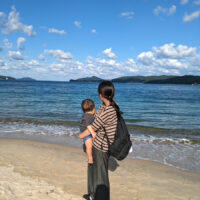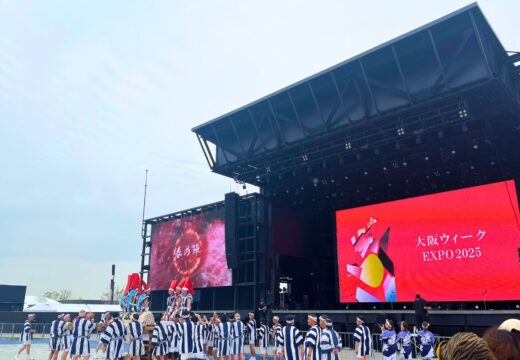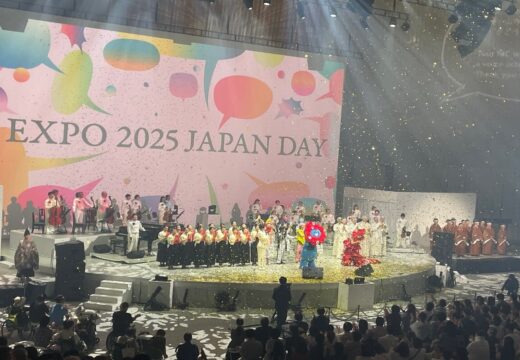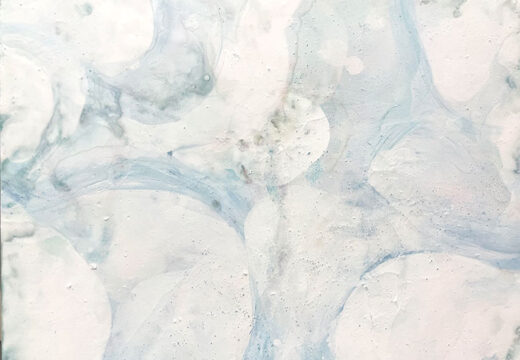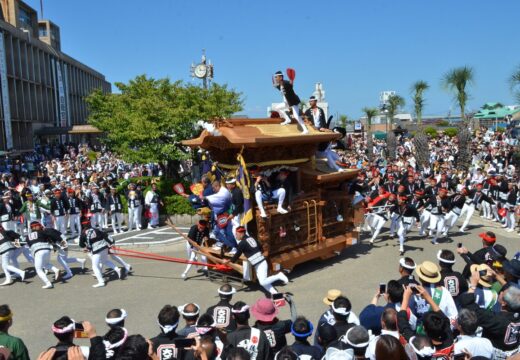Traditional Crafts × Ribbon Contemporary Art “NON Ribbon Exhibition: Mysterious and Cute Things. – Flocking Together -”
Category: event
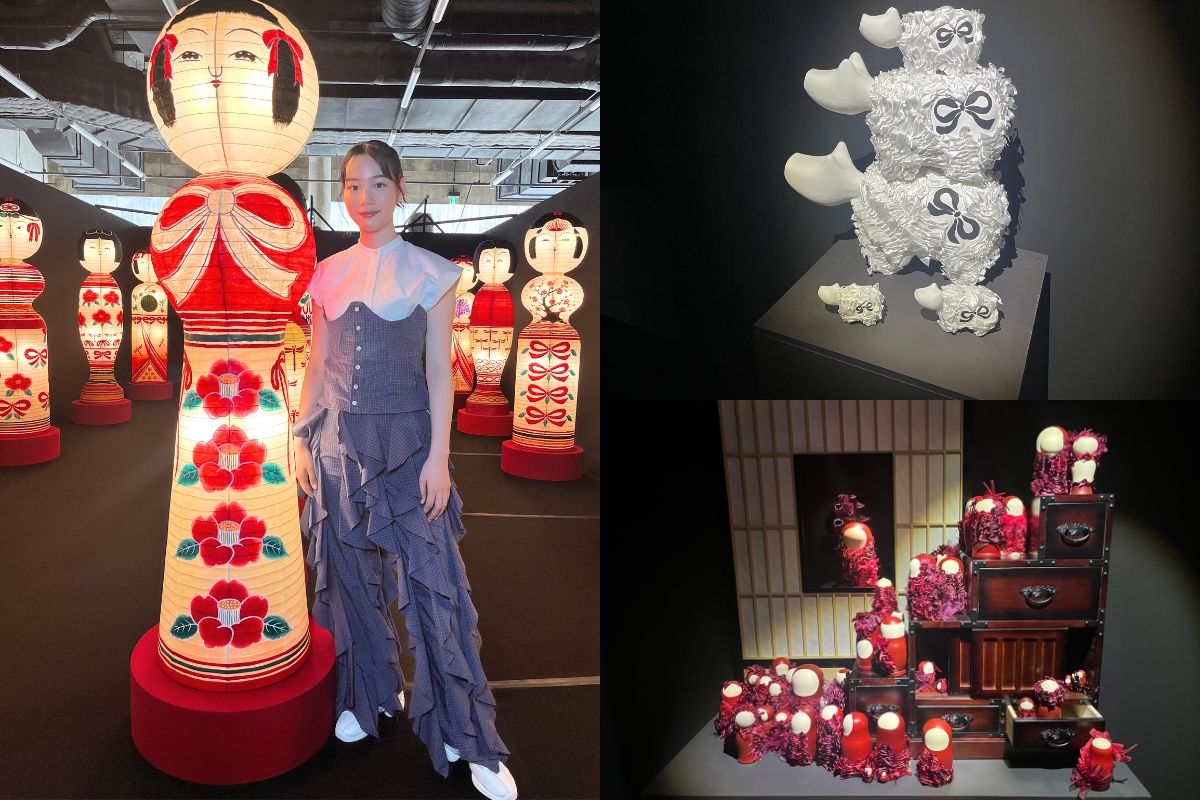
Traditional crafts that are popular both domestically and internationally as art, and Japan’s cute culture that is spreading as a universal language. What kind of chemical reaction occurs when traditional culture rooted in Japan and pop culture fuse together? We introduce an exciting art exhibition by Non, who is active as an actor and artist.
Ribbon Art Exhibition by Non, a Multi-Talented Artist in Japan
The National Museum of Ethnology (Special Exhibition Hall, Underground Hall) located within the Expo Memorial Park in Suita City, Osaka Prefecture, is hosting the “NON Ribbon Exhibition: Mysterious and Cute Things. – Flocking Together -“ will be held from July 31 (Thu) to October 13 (Mon), 2025.
The National Museum of Ethnology, which exhibits the cultures and lifestyles of peoples around the world, is one of the exhibition venues for ”Study: Osaka Kansai International Art Festival 2025,” which is being held concurrently with Expo 2025 Osaka, Kansai, Japan.
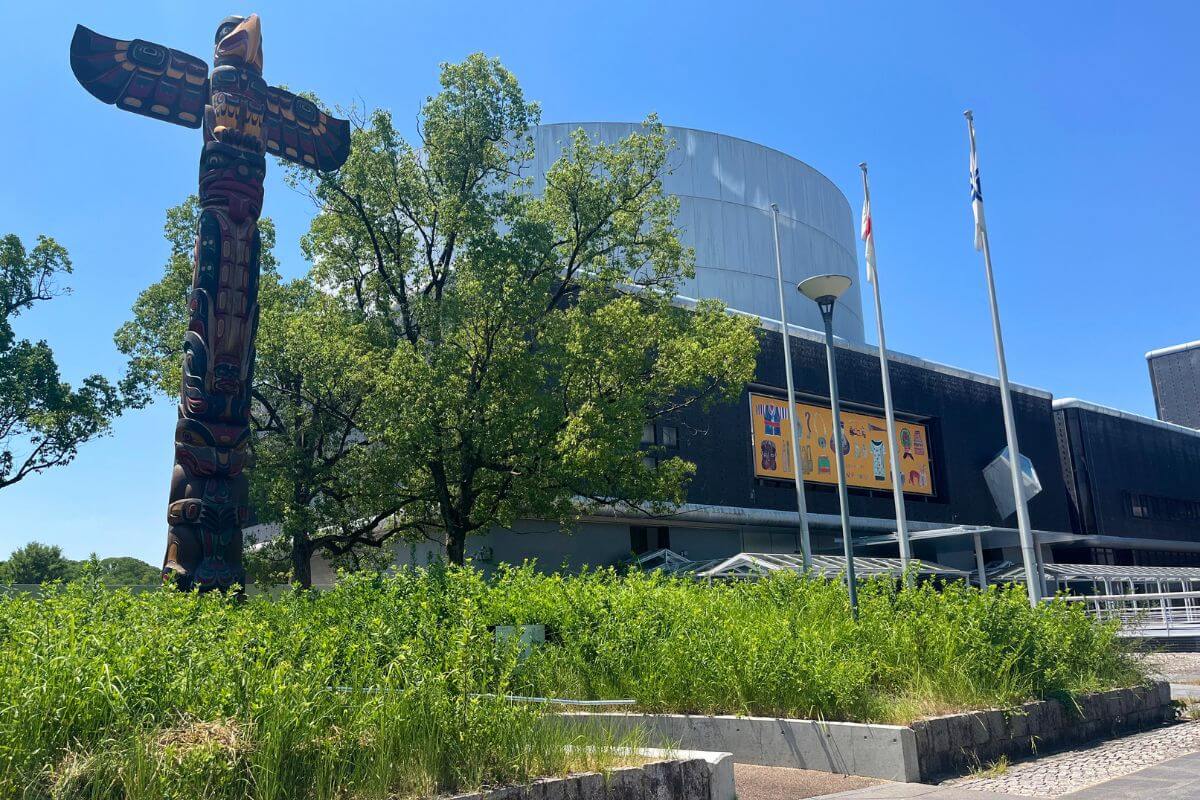
Non, who is active as both an actor and artist, is holding a new exhibition in a location that is attracting attention from around the world. She is known for her role as Matsumoto, the train driver in the Netflix movie “Bullet Train Explosion” (2025), and for voicing the main character Suzu in the animated movie “In This Corner of the World” (2016). Both of these works are available worldwide, so some of you may have seen them.
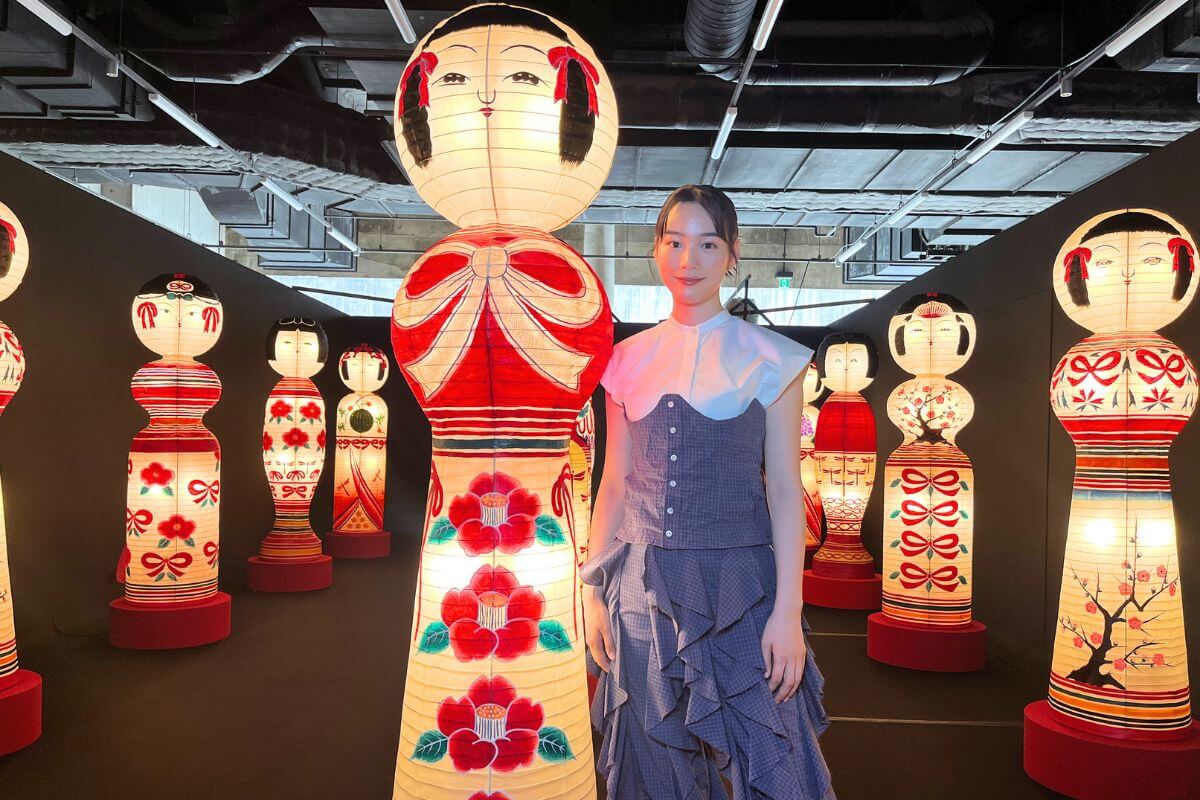
As an artist, she has been organizing ribbon art exhibitions since 2021, establishing her identity as “non.” In her latest exhibition, “NON Ribbon Exhibition: Mysterious and Cute Things. – Flocking Together -,” she presents ribbon art versions of traditional folk crafts that have been passed down throughout Japan for centuries, such as kokeshi dolls, red and white cows, and Tanabata decorations.
The ribbon art, which collaborates with traditional crafts from the Tohoku region, creates a space that is both cute and eerie, bringing a refreshingly cool sensation to the hot summer.
A work that combines cuteness and eeriness
Kodawari Times attended a media preview on July 29 and got a sneak peek at the works! There are four exhibition booths, and we will introduce the highlights of each one.
Akabeko and Shirobeko Room
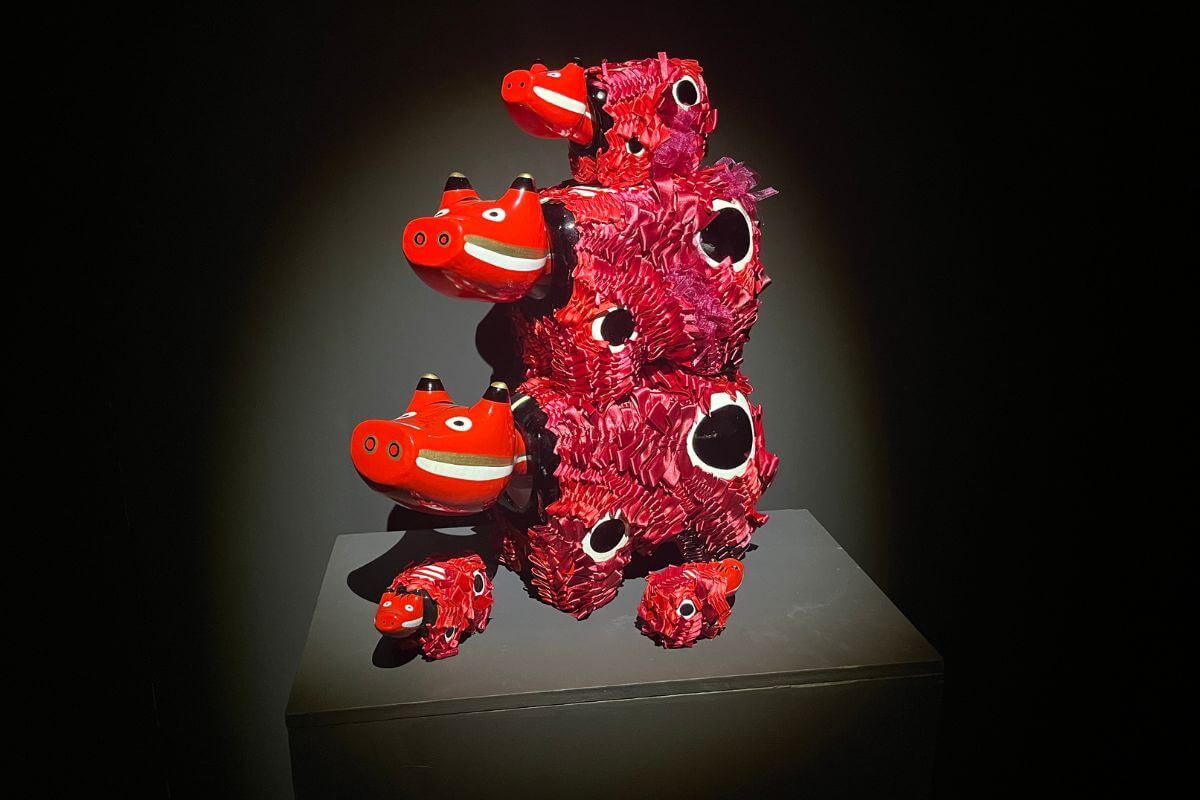
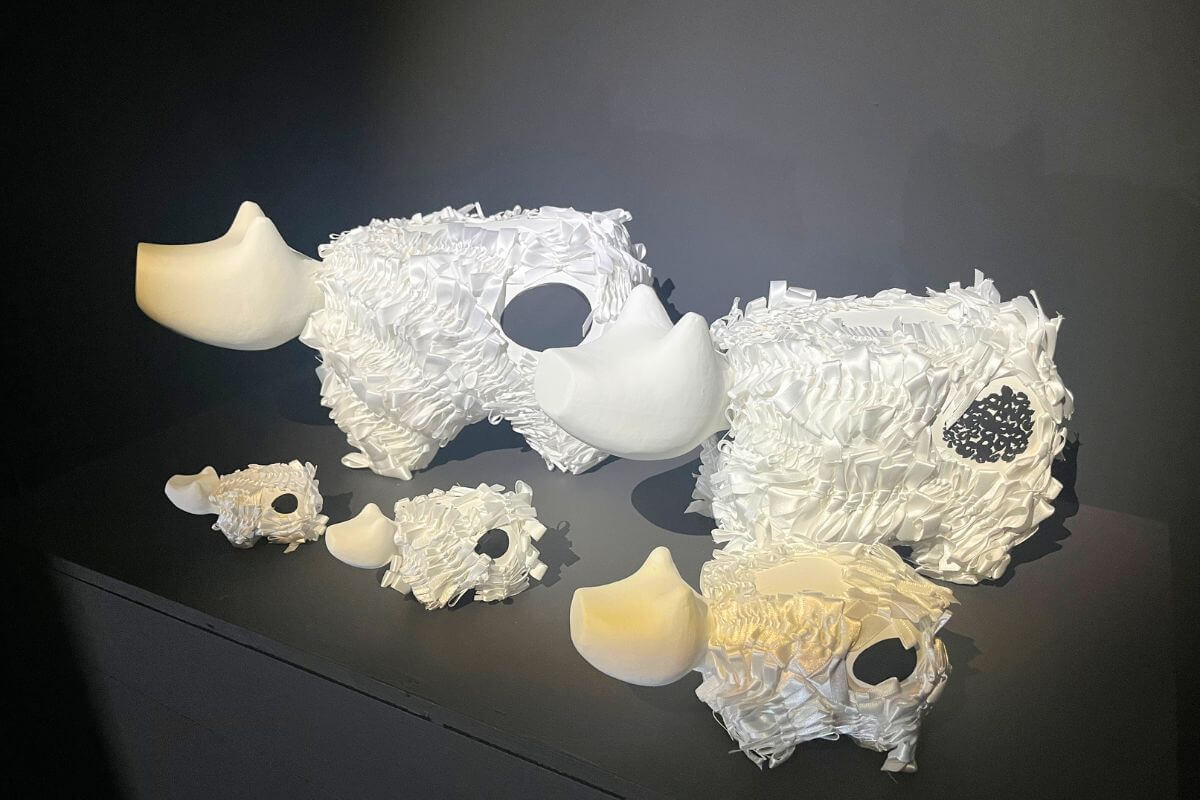
First, there are traditional Hariko dolls from the Aizu region of Fukushima Prefecture, called Akabeko and Shirobeko. Countless ribbons are attached to them, making them even cuter than the original Akabeko. However, the venue is dark, and the Akabeko and Shirobeko are displayed in such a way that they appear to float, which makes them look a little eerie.
Bright Red Child’s Nest
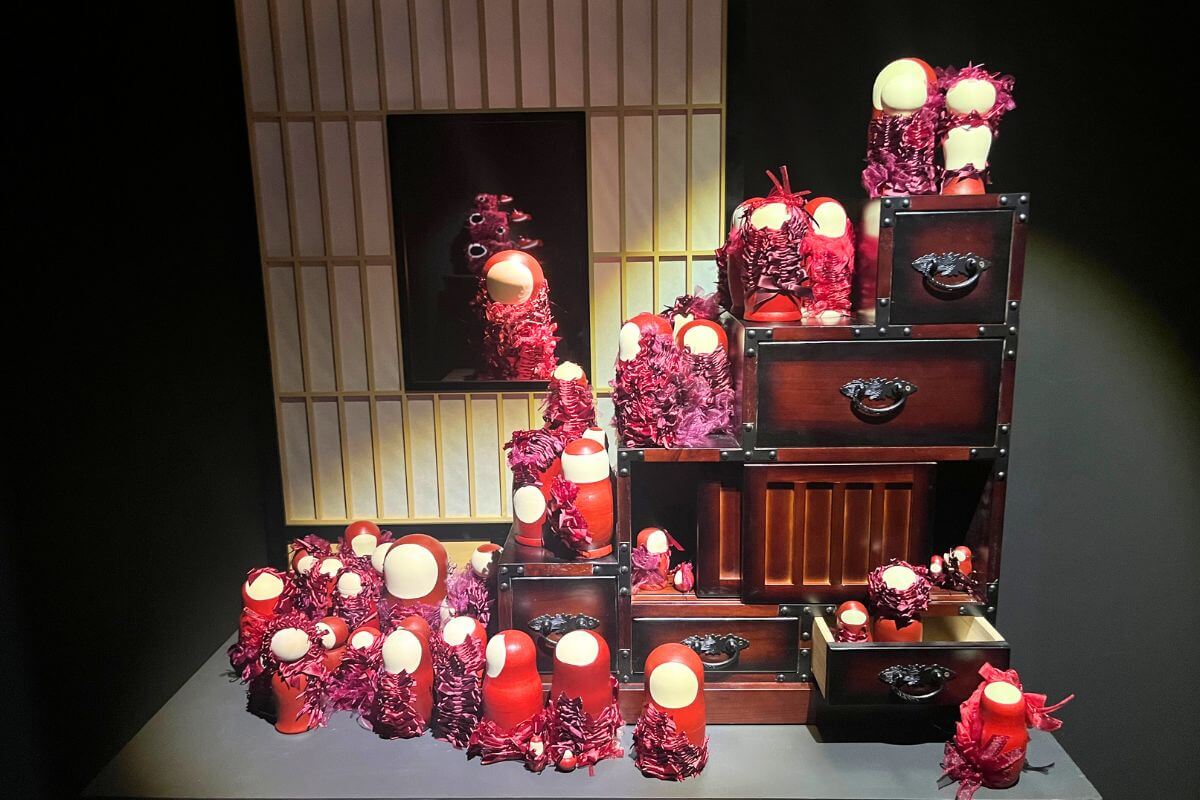
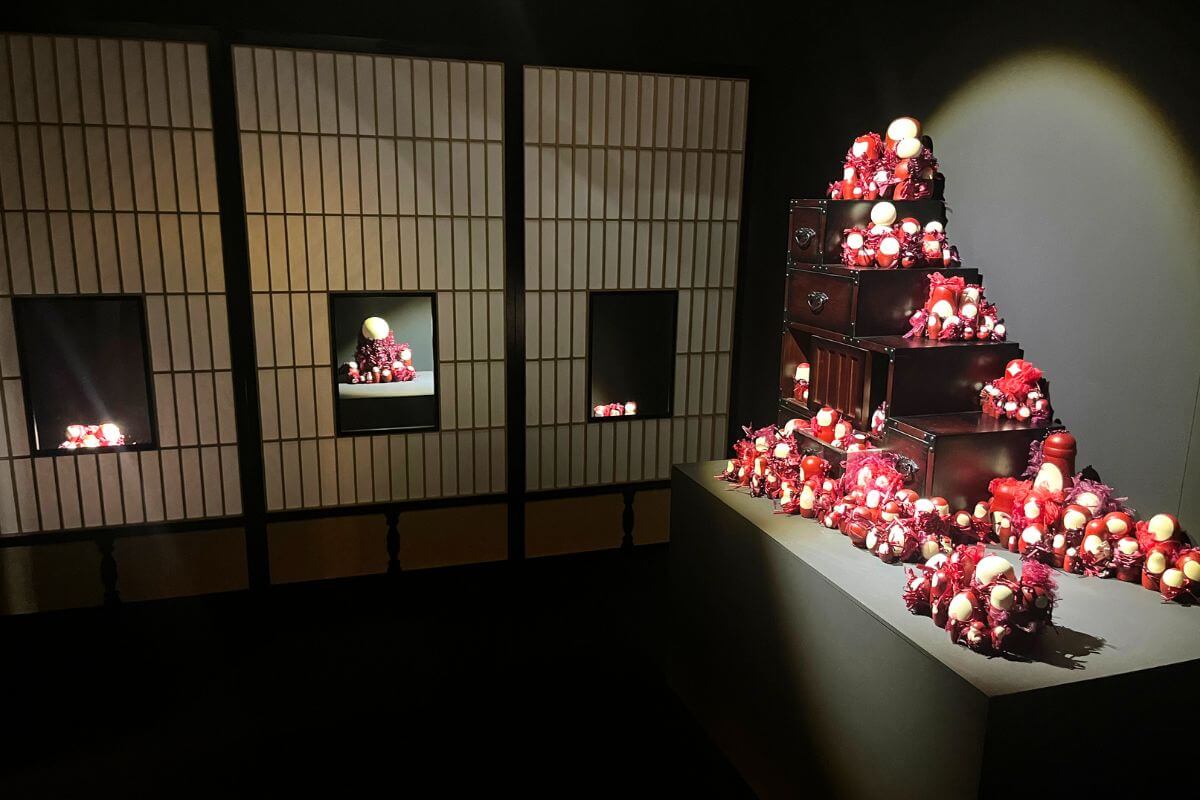
The exhibition features 219 kokeshi dolls adorned with ribbons, inspired by the motif of Zashiki-warashi, a child-like yokai (supernatural creature) that is mainly found in Iwate Prefecture. The work truly embodies the subtitle, “Flocking Together.” The sight of them gathered together is both cute and eerie.
Kokeshi Lantern Highway
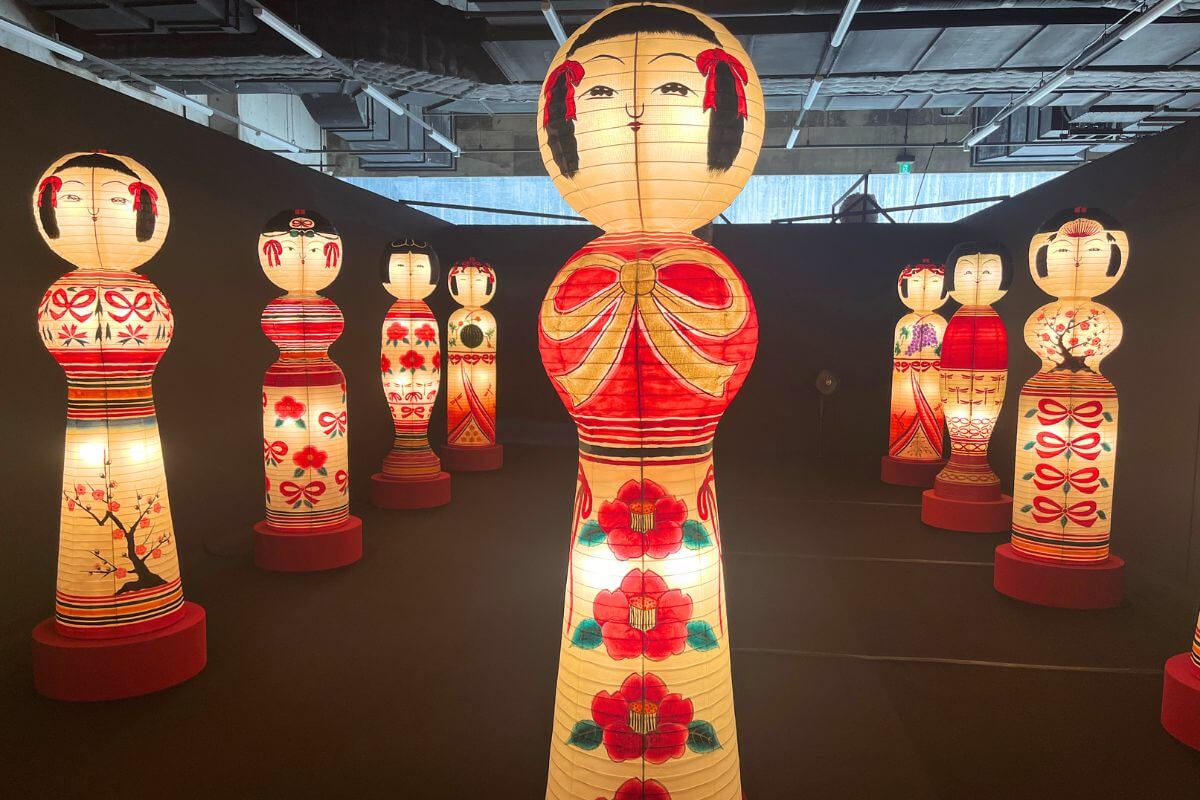
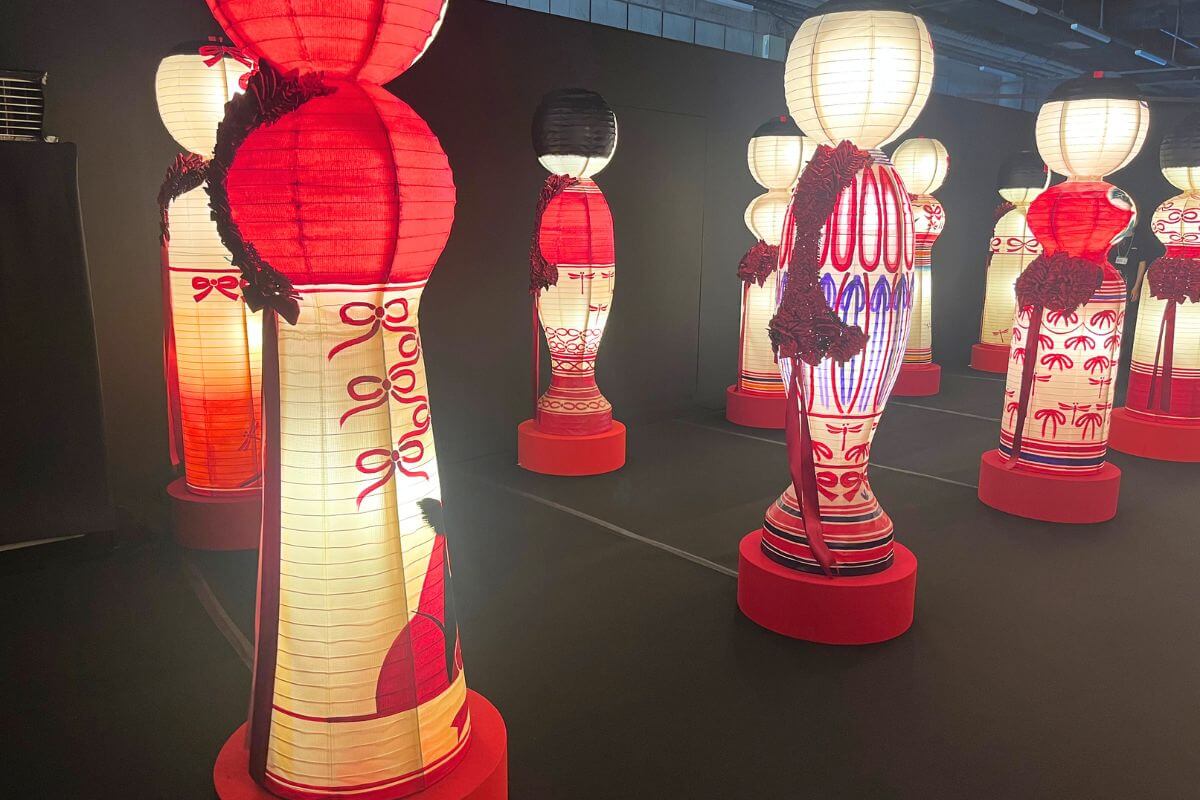
A ribbon art piece created in collaboration with traditional Aomori Tsugaru crafts, kokeshi lanterns. Fifteen pieces, including ten new works, are neatly arranged in a spacious room, creating an impressive large-scale installation. The surfaces of the kokeshi lanterns are decorated with summer flowers, fruits, and daruma dolls, and the ribbons on the backs are each uniquely designed, so please take your time to walk around and admire them.
Esquisse and Tanabata decorations related to the work
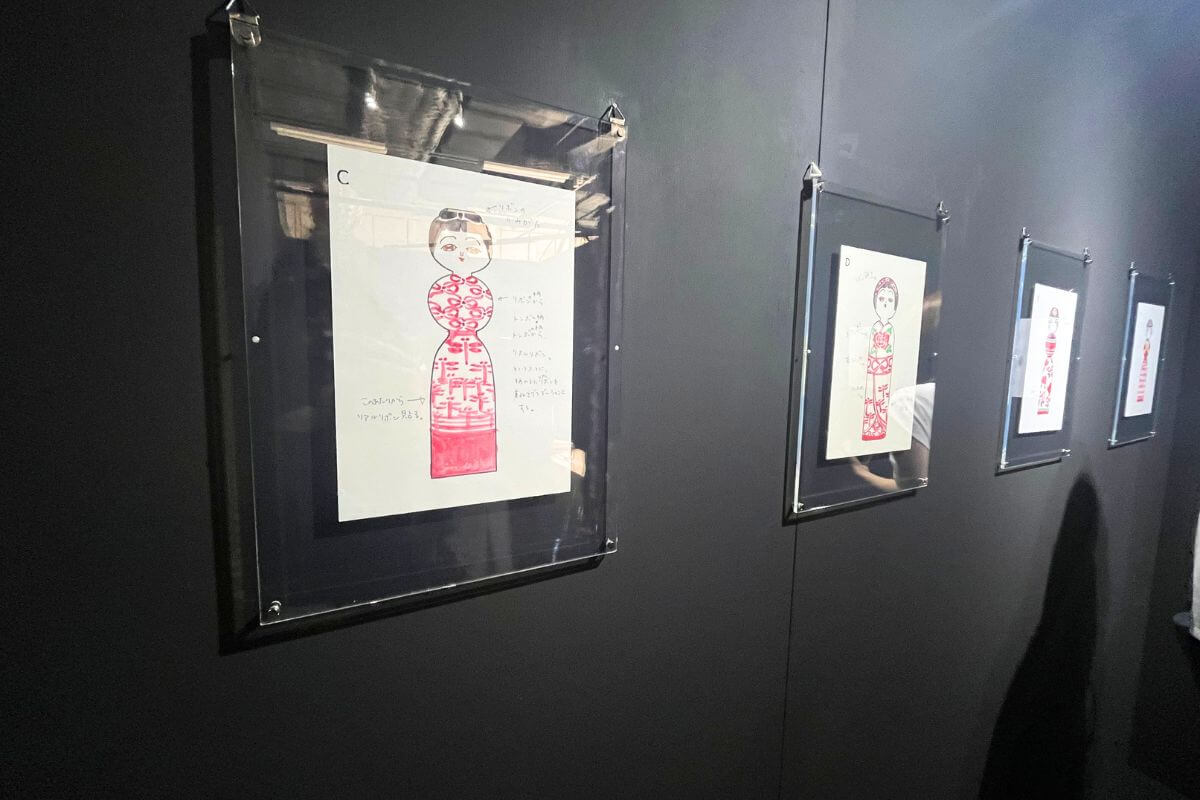
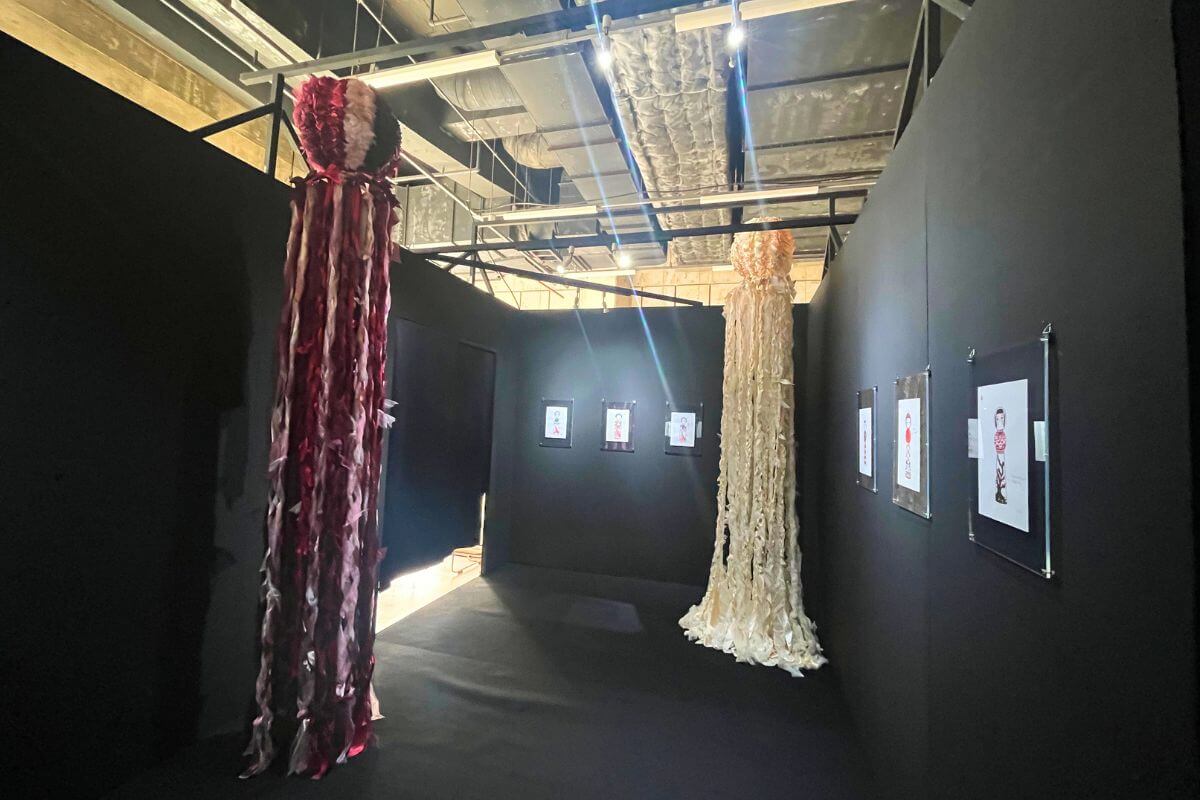
Finally, there is a display of Non’s Esquisse that inspired the creation of the kokeshi lanterns. Based on these drawings, craftsmen painted the designs, and the kokeshi lanterns mentioned earlier were created. Adding to the beauty of the Esquisse, traditional Sendai Tanabata decorations are hung from the ceiling. The giant ribbon art, approximately 3 meters long, is also a must-see.
Non’s thoughts on Ribbon art
After the media preview, Non, who created the ribbon art, appeared and gave a talk show about her thoughts and background regarding her work.
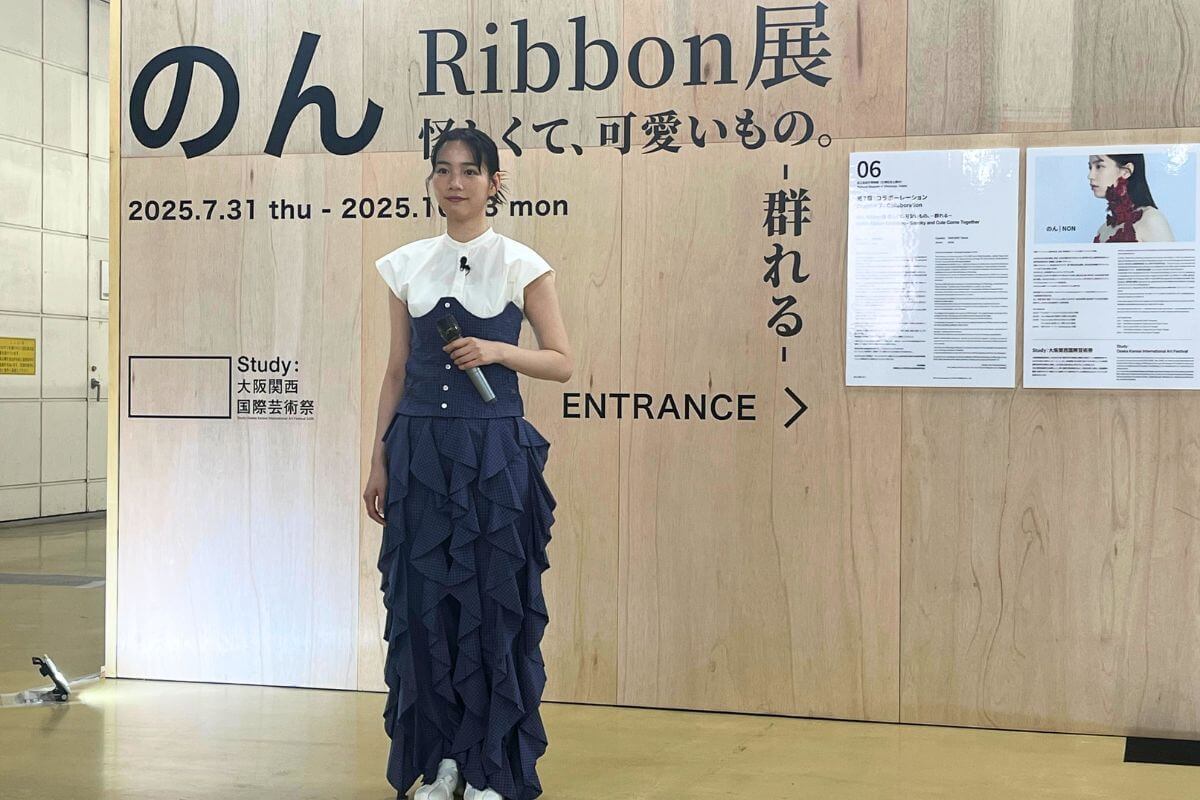
Non took on ribbon art and made it her identity through her independently produced film Ribbon, in which she played the lead role and served as the producer, screenwriter, and director. The film tells the story of an art college student whose graduation exhibition was canceled due to the COVID-19 pandemic.
Non thought, “It would be interesting to express negative emotions such as anger and sadness with cute ribbons. Maybe bad things would look cute.” With this idea in mind, she proceeded with the film production.
This approach of blending contrasting elements—combining cuteness with eeriness, and merging tradition with modernity—forms the foundation of ribbon art.
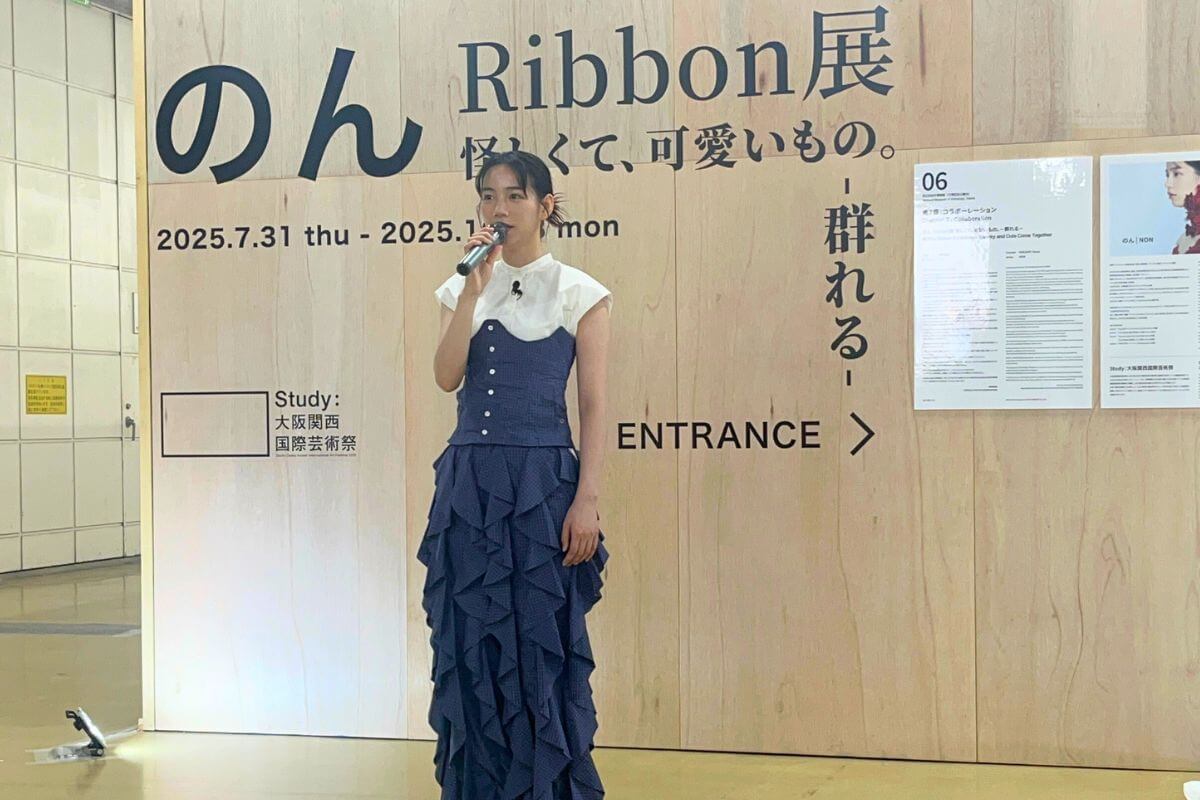
Furthermore, Non’s ribbon art evokes a sense of sympathy with Taro Okamoto’s “polarism” (the coexistence of two contradictory elements without resolution), which he proposed as the theme producer for the 1970 Japan World Exposition and creator of the Tower of the Sun.
Non herself admires Taro Okamoto as “a slightly eerie but fascinating artist,” and regarding the Tower of the Sun, she shared her impressions: “It’s a structure that everyone should see in person at least once. Seeing it in person truly moved me. Once it catches your eye, it draws you in with an irresistible power, piercing your heart like an arrow.”
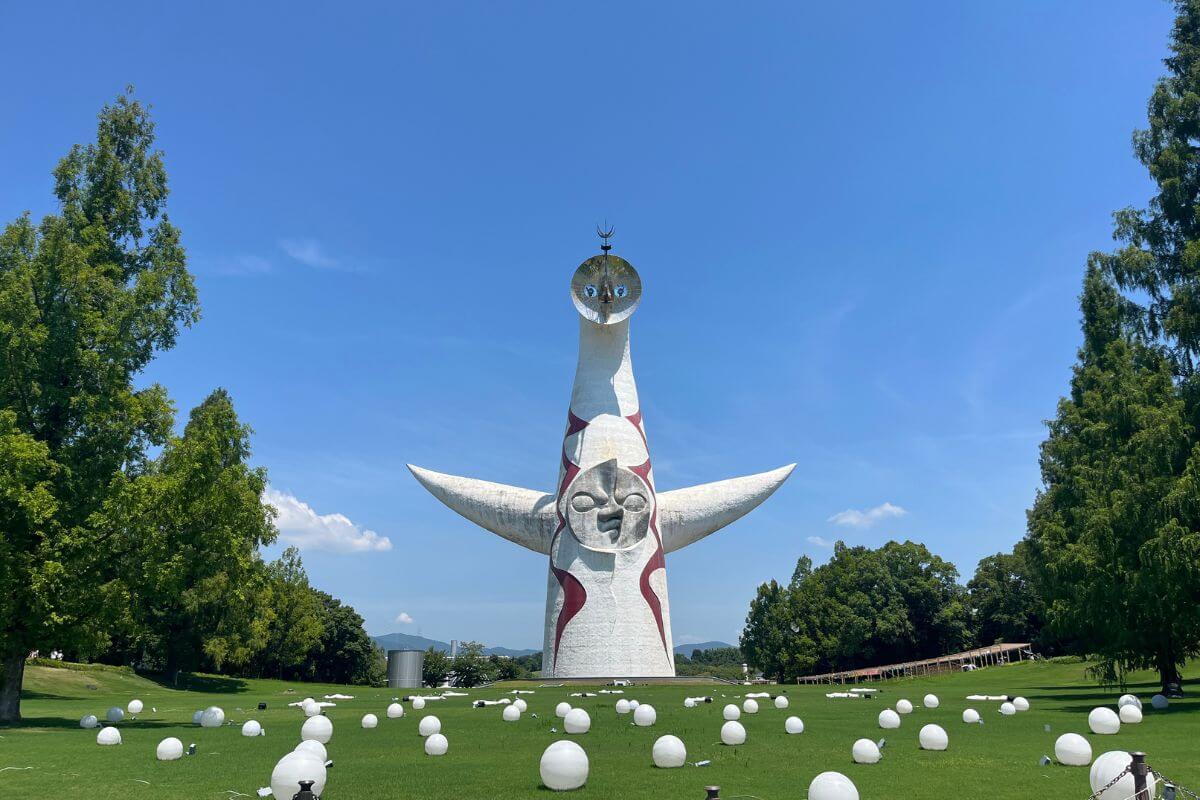
▲The Tower of the Sun, towering near the National Museum of Ethnology
Furthermore, the National Museum of Ethnology, where the exhibition is held, was established based on an idea by Taro Okamoto, inheriting approximately 2,500 ethnographic materials from EXPO ’70. The museum displays various materials related to ethnic groups from Japan and abroad, including kokeshi dolls from all over Japan.
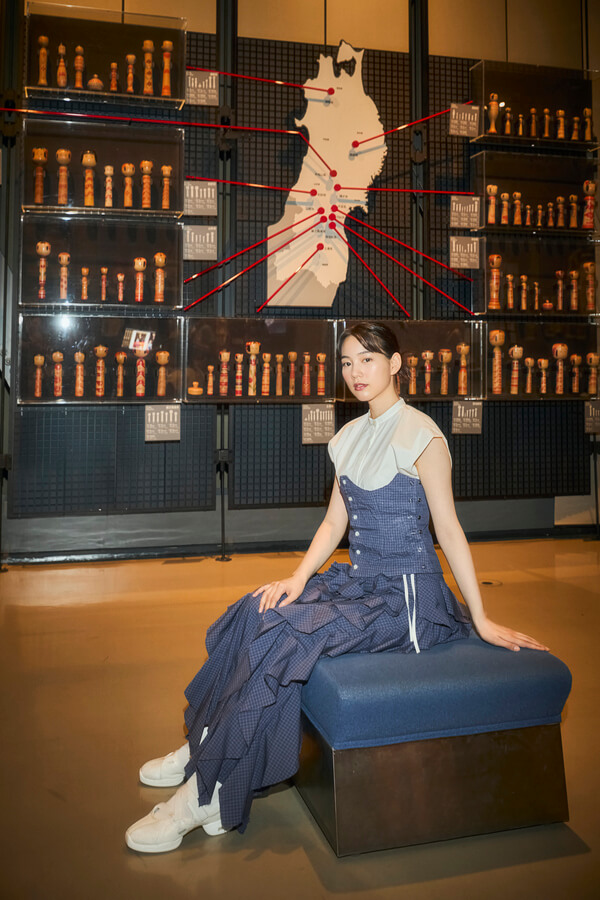
Regarding the exhibition at the National Museum of Ethnology, which seems like a natural fit, she said, “This work was inspired by the National Museum of Ethnology and is a collaboration with Japanese folk crafts. I think you can immerse yourself in the worldview of this exhibition after viewing it, or before viewing it, by seeing the museum’s exhibits.”
To view “NON Ribbon Exhibition: Mysterious and Cute Things. – Flocking Together -,” you will need a ticket for “Study: Osaka Kansai International Art Festival 2025” or a ticket for the National Museum of Ethnology.
We hope you will take this opportunity to view the valuable exhibits at the National Museum of Ethnology, as well as the works created by Non that blend traditional crafts and ribbon art!
NON Ribbon Exhibition: Mysterious and Cute Things. – Flocking Together -: Event Overview
Dates: July 31 (Thu) to October 13 (Mon), 2025
Venue: National Museum of Ethnology (Minpaku) Special Exhibition Hall (10-1 Senri Expo Park, Suita City, Osaka Prefecture)
Minpaku website: https://www.minpaku.ac.jp/en
Admission: Paid
A ticket for “Study: Osaka Kansai International Art Festival 2025” or a ticket for the National Museum of Ethnology is required.
Ticket Purchase: https://osaka-kansai.art/en/pages/ticket
Official Website: https://osaka-kansai.art/en
■Credits
Exhibition Title: NON Ribbon Exhibition: Mysterious and Cute Things. – Flocking Together –
Speaker: Non
Osaka Kansai International Art Festival General Producer Daisuke Suzuki, Curator Yasuo Nakano
Study: About the Osaka Kansai International Art Festival 2025
Study: Osaka Kansai International Art Festival 2025 is an art festival that studies the relationship between art, people, and society. With 93 groups of artists from 24 countries and regions participating (as of June 8), the festival will be held during the Expo 2025 Osaka, Kansai, Japan from April 13 to October 13, 2025, serving as a bridge between the Expo and the Osaka area.
The venues span both inside and outside the Expo site in Yumeshima, including the Osaka Cultural Center and Tenpo-zan designed by Tadao Ando, the Umeda area, the Nishinari area, the Shinsaibashi area, Matsubara City, the National Museum of Ethnology within the Expo Memorial Park where the 1970 Expo was held, and the Osaka Prefectural International Convention Center (both designed by Kisho Kurokawa), which serves as the venue for “Study × PLAS: Asia Art Fair.” These venues are located across Osaka, symbolizing the city’s diverse cultural landscape.
Official website: https://osaka-kansai.art/en
